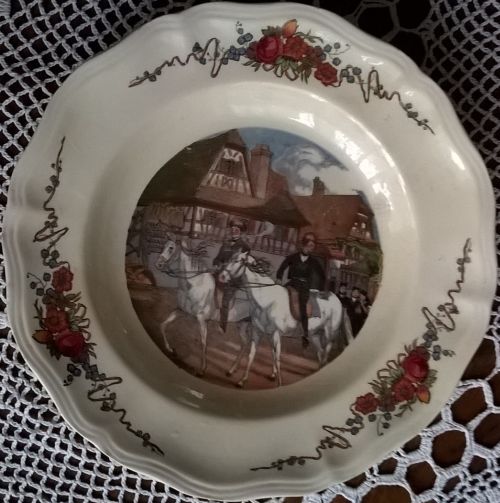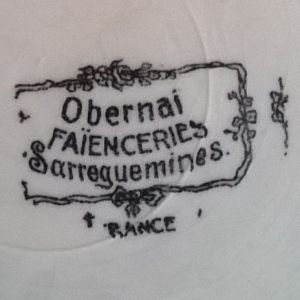Porcelain
- Category: Porcelain
Assiette En Faience De Sarreguemines - Obernai pattern plate

Obernai pattern Sarreguemines earthenware plates feature traditional Alsatian scenes and views.
There are bouquets of flowers on the plate edge. Diameter is 25.5 cm and 4 cm height.
Nicolas-Henri Jacobi along with his two partners established first factory in 1790. However the economic situation wasn't favorable.
Paul Utzschneider took over the factory in 1800. One of his best customers was Napoleon I. Alexandre de Geiger started management of the factory in 1838. He began beneficial cooperation with Villeroy & Boch. In 1853 and 1860 were built new steam operating plants.
Paul Utzschneider, then his son Alexander Geiger and the latter's son, Paul de Geiger introduced in 19th century a small Sarreguemines city into the world of faience industry. The Sarreguemines Faience produced plates, vases, flowerpots, fireplaces and more.
According to the Treaty of Frankfurt signed on May 10, 1871, which ended the Franco-Prussian War, the French department of Moselle was anected to Germany. This year Paul de Geiger became new manager. He died in 1913. Utzschneider & Cie was then split into two companies, one managing the establishments in Sarreguemines, the other French plants.
After the Great War units were united again under the name Sarreguemines - Digoin - Vitry-le-François and was run by the Cazal family. In 1978 the factory was bought by the group Lunéville-Badonviller-Saint-Clément. New leadership decided in 1979 to abandon production of tableware and concentrate on producing tiles.
On January 2007 the court ordered liquidation of the company.
The plate is marked:
Obernai
FAIENCERIES
Sarreguemines
FRANCE


